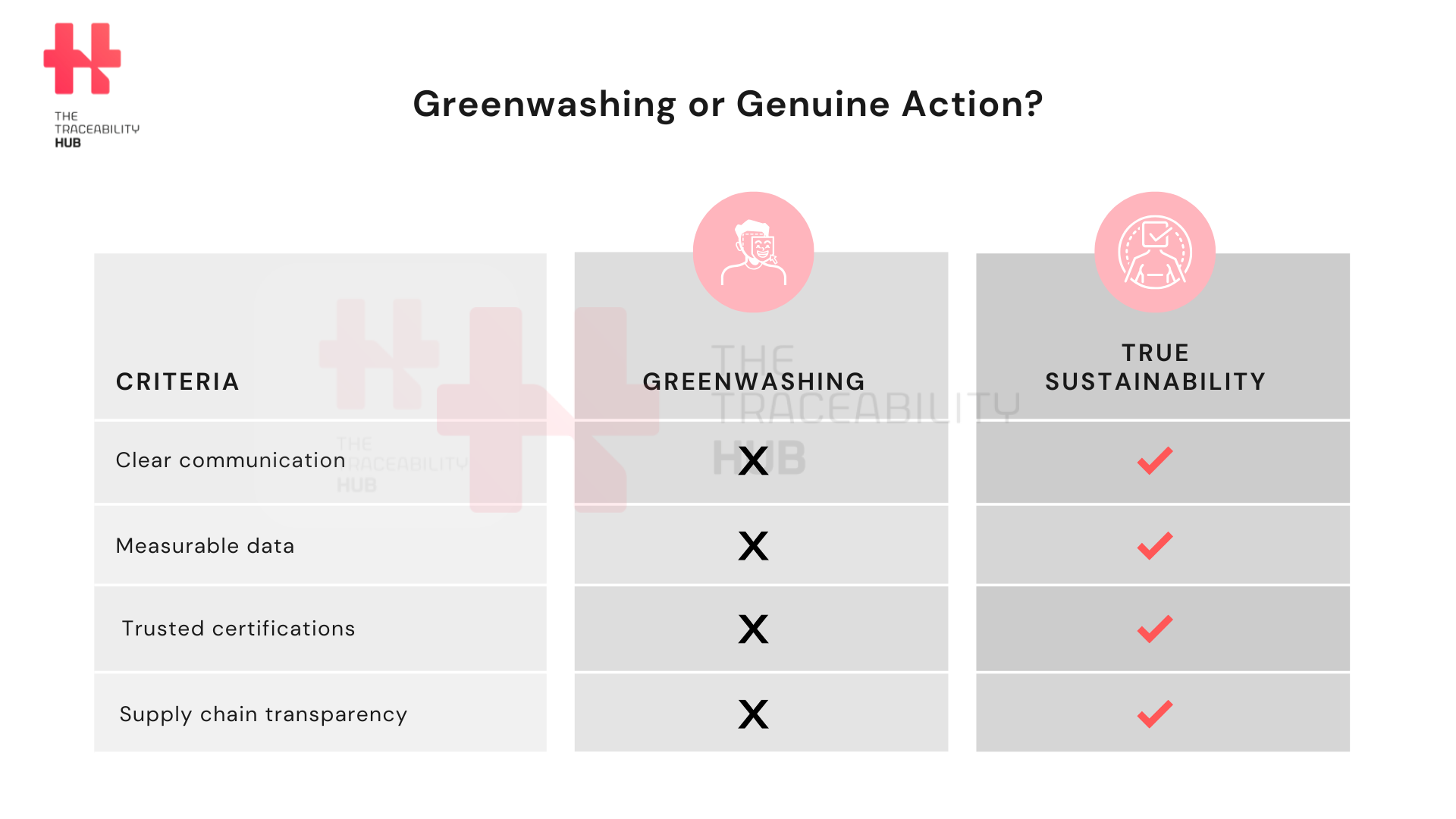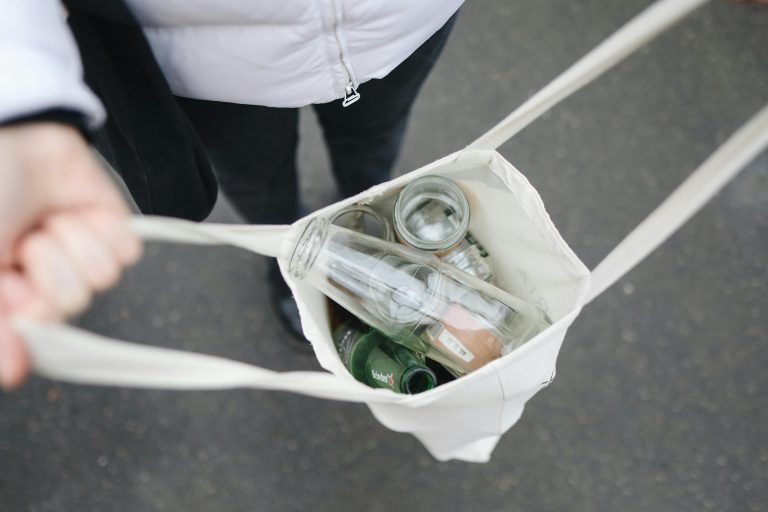The marketplace today faces a troubling reality – 98% of US products with “green” labels contain deceptive environmental claims. When it comes to sustainability most consumers are not doing what they state in surveys, or when they are asked. They would probably pay extra for environmentally responsible products, but they are not always sure about the level of truth in the claims and data. They would probably commit themselves only when they trusted a company’s genuine commitment to the cause.
This because the stakes are high: 64% of people see climate change as an “emergency”. Consumer behavior reflects this concern as 52% have changed their buying habits to reduce environmental harm.
Greenwashing raises many questions about its nature and identification. Volkswagen, with their emissions scandal, was one of the most expensive corporate frauds in automotive history. The leader automotive company installed sophisticated software in its cars, the “clever” vehicles could in fact detect when emissions tests were being conducted: during testing conditions, the vehicles would operate within legal emissions parameters. But once delivered and on the road, they would switch to a different operating mode that produced pollution far exceeding legal limits.
Since then, many companies have found that an eco-friendly image brings more profits than making real environmental changes.
The independent federal agency SEC, The Securities and Exchange Commission, is protecting investors and maintaining fair and efficient markets. Therefore, it has started cracking down on these false sustainability claims, imposing fines over $4 million in 2023 alone.
This piece breaks down the key differences between greenwashing and authentic sustainability. You’ll learn ways to avoid greenwashing in business operations, see examples of companies caught in the act, and get practical steps to build real sustainability programs.
Understanding the latest trends and consumers’ behavior, and the differences in the buying habits, aren’t just about ethics anymore – it’s crucial for business survival.
What Is Greenwashing and Why It Matters
Definition of Greenwashing
Greenwashing happens when companies try to look more environmentally friendly than they really are. Merriam Webster dictionary defines it as “the act or practice of making a product, policy, activity, etc. appear to be more environmentally friendly or less environmentally damaging than it really is”.
Companies exaggerate or make false claims about their green credentials to profit from people who want eco-friendly products.
There are also other misleading communication and business practices such as: “Greenwishing” (based on wishful thinking), “Greenhushing” (where companies underreports, or hides, its sustainability credentials from stakeholders), “Greenflation” (an increase in prices attributed primarily to sustainability commitments, without clear justification), and “Greenshifting” (if sustainability goals cannot be met and must be recalibrated, but due to poor management planning).
Why Greenwashing Is Harmful to Consumers and the Planet
Greenwashing causes serious damage in several ways: it tricks consumers and makes it almost impossible to make smart buying choices.
The European Commission’s research shows that authorities suspected misleading environmental claims in 42% of cases that could be unfair commercial practices.
On top of that, it damages trust in real sustainability work. People become doubtful of all environmental claims after they find out they’ve been fooled. This doubt gets in the way of solving urgent environmental problems. More than that, greenwashing takes focus away from real solutions.
The United Nations sees it as “a significant obstacle to tackling climate change” because it “promotes false solutions to the climate crisis that distract from and delay concrete and credible action”.
So, people end up paying extra for products that don’t help the environment at all. These greenwashed products might even contain harmful chemicals that can damage human health and the environment.
Common Greenwashing Tactics Used by Companies
Companies use several tricks to look environmentally responsible:
- Vague terminology: They use words like “natural,” “green,” or “eco-friendly” without any real proof or science behind them.
- Hidden trade-offs: They promote one green feature while hiding other harmful effects—like saying a product is “recyclable” when making it creates lots of pollution.
- Misleading imagery: They put pictures of trees, leaves, forests or clean landscapes on packaging for products that hurt the environment.
- Irrelevant claims: They brag about doing things that are already required by law as if they’re doing something special.
- False certifications: They create official-looking labels that hint at third-party checking when none exists.
The Federal Trade Commission has noticed a big increase in misleading environmental marketing claims, which has led to stricter monitoring.
Both consumers and regulators are getting better at spotting the difference between real sustainability efforts and fake greenwashing tricks.
What True Sustainability Looks Like
Real sustainability needs an integrated approach that balances environmental protection, social responsibility, and economic viability. It goes beyond surface-level marketing claims and builds responsible practices into every part of an organization.
Long-Term Environmental Commitment
Real sustainability needs more than just reducing harmful environmental practices. While independent, no profit, non-governmental and public organizations that pursue real sustainability know they’re part of larger ecosystems, they understand how their operations shape these systems, many private companies must improve and work within proven environmental limits and help restore natural systems. Their policies should meet today’s needs while protecting future generations’ resources.
Examples of Sustainable Companies
Many organizations show what real sustainability means in practice.
Schneider Electric led TIME’s 2024 sustainable companies list by developing energy management software and setting bold targets—carbon neutral by 2025.
Moncler earned third place through its use of recycled materials and 100% renewable energy at all facilities.
IKEA proves its commitment as 99.5% of its wood comes from FSC-certified or recycled sources.
Patagonia is one leading example since 1985:
they use only recycled materials: recycled polyester, nylon, wool in many products. It was one of the first companies to make fleece from recycled plastic bottles.
They use only organic cotton: since 1996, avoiding harmful pesticides and synthetic fertilizers.
They promote the “Worn Wear Program”: to encourage customers to repair, reuse, and recycle their clothing, extending the life of garments and reducing waste.
They have given over $140 million to environmental projects.
How Sustainability is Measured
Getting a full picture of true sustainability means looking at multiple areas:
- Environmental metrics: Carbon footprint, energy efficiency, water usage, waste generation, and effects on biodiversity
- Social metrics: Employee benefits, community contributions, workplace diversity, and human rights compliance
- Economic metrics: Research investments, risk management, and long-term viability
Companies can use tools like ENERGY STAR® Portfolio Manager® to measure energy usage, or Life Cycle Assessments to review environmental effects throughout a product’s life. Real sustainability—unlike greenwashing—shows results through clear, measurable metrics instead of vague marketing claims.
How to Spot Greenwashing vs. Real Sustainability
Companies need detective skills to distinguish real sustainability from clever marketing. Products with ESG-related claims show faster growth in two-thirds of categories. This creates clear incentives for companies to appear green, whatever their actual practices.
Look for Transparency in Reporting
Clear disclosure marks genuine sustainability. Companies that truly commit to environmental responsibility back their claims with measurable, concrete evidence through detailed reports, independent audits, and relevant certifications. Specific metrics on emissions, waste reduction, and resource conservation matter more than vague statements. Real sustainability champions share both their wins and their struggles openly with facts and figures.
Check for Third-Party Certifications
Trust builds through third-party verification that establishes industry baselines. Respected certifications like B Corp, Cradle to Cradle, Forest Stewardship Council (FSC), Green Seal, or ENERGY STAR prove commitment. These certifications demand strict reviews of multiple sustainability aspects, from material health to social fairness.
Get into the Entire Supply Chain
Companies need to manage their complete supply network effectively. Public processes for screening suppliers’ sustainability risks exist in only 17.2% of companies assessed in 2023. Just 44.5% have supplier and supply chain codes of conduct available publicly. Real sustainability runs through the value and supply chain and includes all suppliers and production stages/touchpoints.
Watch Out for Vague or Misleading Language
Terms like “eco-friendly,” “natural,” or “green” need specific definitions. These claims often lack solid proof and real meaning. Claims of being “climate neutral,” “environmentally conscious,” or simply “sustainable” deserve careful scrutiny.
Many companies highlight one positive feature while they ignore negative effects in other areas.
Compare Claims with Actual Business Practices
Greenwashing or Genuine Action

Actions tell the real story. A company’s environmental claims should match their operations. Marketing messages often clash with actual business practices. Take a company that advertises minimal packaging but runs factories that pollute heavily. True sustainability leaders show consistent environmental responsibility in everything they do.
Greenwashing Examples and Lessons Learned
Major corporations have faced public scrutiny over the past few years for sustainability claims that didn’t match reality. These cases (which are often public and available on the web), give us valuable lessons about deceptive practices and authentic approaches to environmental responsibility.
Volkswagen’s Clean Diesel Scandal
Volkswagen’s “clean diesel” campaign stands as one of the most notorious greenwashing examples in corporate history. Authorities found in 2015 that the company had installed illegal software in 11 million diesel vehicles to cheat emissions tests. These vehicles released up to 40 times more harmful nitrogen oxides during normal driving than during testing. This calculated deception ended up costing Volkswagen $14.7 billion in settlements, with $10.03 billion going to consumer compensation. The scandal showed how greenwashing can devastate both a company’s reputation and finances.
H&M’s Conscious Collection Controversy
Fast-fashion retailer H&M’s reputation suffered from backlash over its “Conscious Collection” sustainability claims. The Changing Markets Foundation’s 2021 investigation found that 96% of H&M’s sustainability claims were misleading or lacked validation. H&M marketed its products as being made “with a little extra consideration for the planet” yet used mostly recycled polyester—a material that releases microplastics and adds to landfill waste. Several lawsuits followed, alleging H&M’s deceptive marketing practices. This case emphasizes how partial truths become greenwashing when companies ignore broader environmental effects.
How Patagonia and IKEA Set a Better Example
Some companies take more authentic approaches to sustainability. Patagonia’s honest acknowledgment states “we can’t delude ourselves into thinking that anything we or any other business does is ‘sustainable'”. The company’s success proves that environmental responsibility can generate profits through long-term commitments and donations to environmental causes.
IKEA has moved past previous controversies by setting concrete sustainability goals, with 99.5% of its wood coming from FSC-certified or recycled sources.
Both companies focus on transparency about challenges instead of making exaggerated claims, which builds lasting consumer trust.
A Roadmap to Credible Green Action
According to Gartner, the American research and advisory firm dedicated to business and technology, the executive leaders should take the following steps:
- Review the regulatory landscape to assess new and emerging sustainability-communication-related regulations.
- Assess stakeholder sustainability expectations by partnering with corporate communications to undertake a stakeholder sustainability communication needs analysis.
- Assess sustainability communication traps. Review the controls in place, including what, how and when communications are delivered.
- Scrutinize the governance process to check that responsibilities are assigned and processes are in place to prevent “messaging drift.”
Businesses and consumers need to tell the difference between greenwashing and real sustainability.
This piece shows how false environmental claims break trust and fool customers. These practices end up hurting our planet. Real sustainability champions like Patagonia show their work through clear numbers and detailed environmental programs.
Quick marketing wins through greenwashing lead to huge money losses and reputation damage. Instead, companies that embrace real sustainability create loyal customers and set themselves up for future success.
Climate change has become an emergency for 64% of people today. Companies can’t just see sustainability as a marketing chance – it’s now a basic business need. Without doubt, companies that blend environmental thinking into their core business will succeed in this new market.
Smart companies should ask themselves three questions before making green claims:
- Can we prove these statements with data?
- Have we looked at our whole environmental footprint?
- Could our practices stand up to public review?
If you can’t say a strong “yes” to these questions, you need to think over your approach.
Moving forward needs steadfast dedication to real sustainability, honest coverage, and open talk about wins and challenges. Perfect sustainability may be out of reach, but customers reward honest work while rejecting fake claims.
So choosing between greenwashing and true sustainability isn’t just about ethics – it shapes your company’s future success.
Read more: Why Digital Product Passports Are Your Best Defense Against False Green Claims






